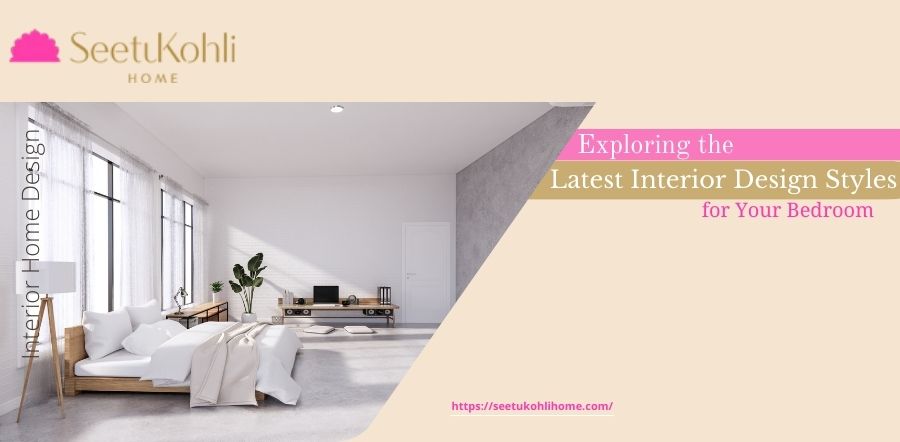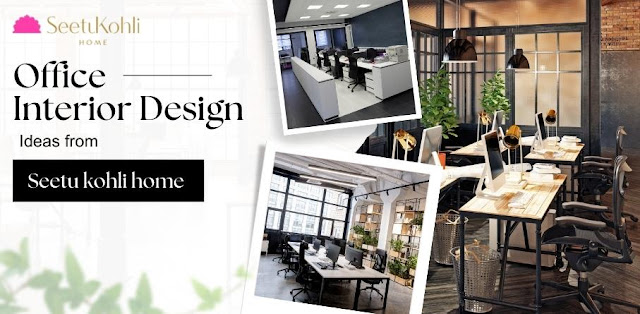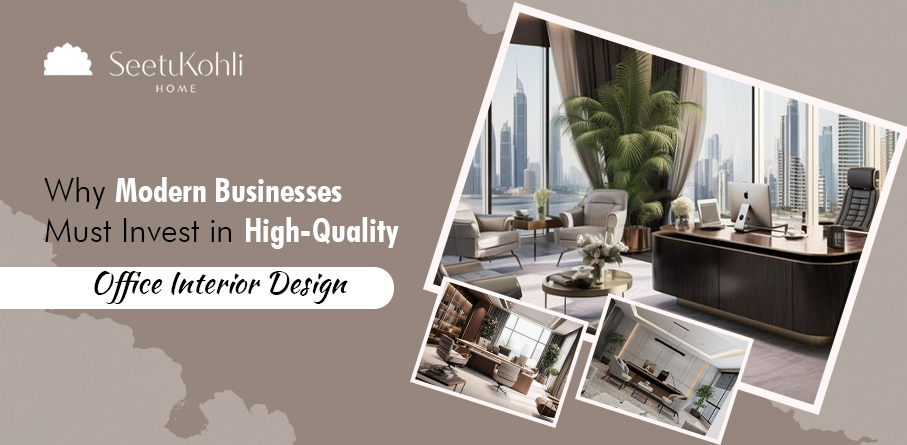How can an interior designer make your small office into a corporate office?
Office interior design has seen a remarkable transformation in recent years. The era of an ordinary, uninteresting interior for office is over. Today, modest workplaces are being transformed into thriving corporate hubs by interior designers using their creative powers. Let's look at how they accomplish this amazing achievement.
Collaborative and Flexible Environments
The construction of flexible and collaborative spaces is one of the fundamental concepts in contemporary office interior design. These areas abandon the conventional cubicle configuration in favor of open, modular layouts. It is intended to promote staff contact, cooperation, and idea sharing. To accommodate various work styles and demands, informal gathering spaces, breakaway zones, and flexible meeting spaces are seamlessly integrated.
Designers use stackable furniture for office, acoustic panels, and dividers to accomplish this. These components provide the workstation the adaptability needed to change with needs, increasing comfort and productivity.
Integrated Technology
Modern workplace design is based on technology. Efficiency and cooperation are improved by the incorporation of cutting-edge technology solutions, such as interactive displays and video conferencing capabilities. While polarized vinyl provides privacy and effectively utilizes natural light, smart sensors improve energy consumption.
Regardless of team members' geographical locations, these technology improvements provide seamless communication and collaboration, enabling a dynamic work atmosphere.
Sustainability and well-being
The health of employees and sustainability are given top priority in contemporary and creative small office interior design. Utilizing natural lighting and incorporating organic features like plants are essential. Sustainable building materials and energy-saving lighting fixtures also help to create a healthy work environment. Air filtration systems and outdoor areas are examples of cutting-edge technology that improve air quality.
The use of biophilic design, which integrates nature with the workplace, is expanding. By incorporating natural elements into workplace settings, it improves workers' comfort, wellness, and general productivity.
Design That Is Employee-Centered
The focus of modern workplace layouts is on the workers. People who have adaptable workplaces may modify it to suit their tastes in furniture, lighting, and temperature. Additionally, the strategic integration of relaxation areas encourages a healthy balance between work and life.
Employee comfort and happiness are maximized in personalized settings, creating a conducive environment for top performance. Relaxation facilities and breakout spaces provide a better work-life balance, which increases engagement and productivity.
Company culture and brand architecture
The modern office is a blank canvas on which brand identity and corporate culture may be expressed. An atmosphere that is in line with a company's ideals is created by carefully choosing the furnishings, colors, and materials. This not only makes the workplace more attractive, but it also increases visitor satisfaction and improves staff loyalty.
Adaptive and Agile Design
Agility is essential in the rapidly changing corporate environment of today. Office layouts must change to meet changing demands. Flexible wiring and communication technologies are also required, as well as furniture and partitions that can be easily reconfigured. This strategy is shown by the Agora technique, which emphasizes communication and attention.
Wellness and Rest Spaces
Given the importance of employee well-being, a modern design office devotes areas for rest and renewal. These places include relaxing rest areas, meditation spaces, exercise facilities, and even outdoor locations. These settings encourage creativity and improve mental and physical health.
Particularly, outside areas are becoming more significant since they provide a breath of fresh air and chances for casual gatherings and activities.
conclusion
interior designers are essential in changing outdated offices into cutting-edge work environments. They give workplaces new life by adopting flexible design, promoting well-being, incorporating technology, and creating employee-centric settings. Businesses that take advantage of the evolving office design trends can boost employee happiness, productivity, and teamwork. The masterminds driving this shift are interior designers, who make sure businesses maximize their workspaces and reach their maximum potential.




Comments
Post a Comment